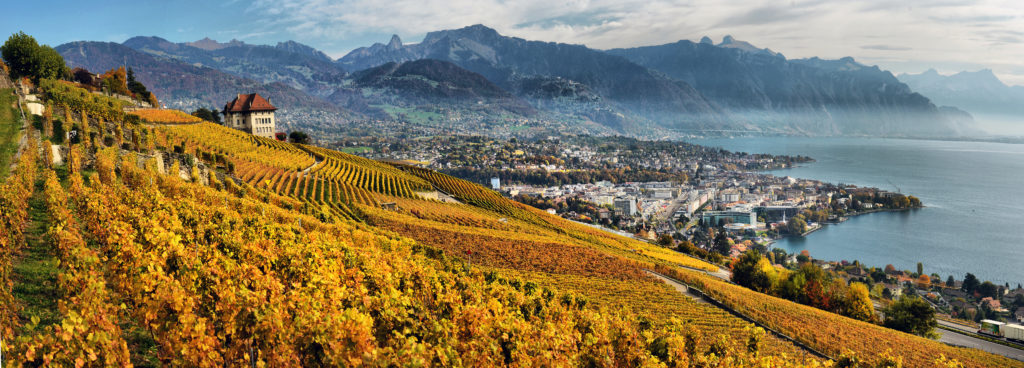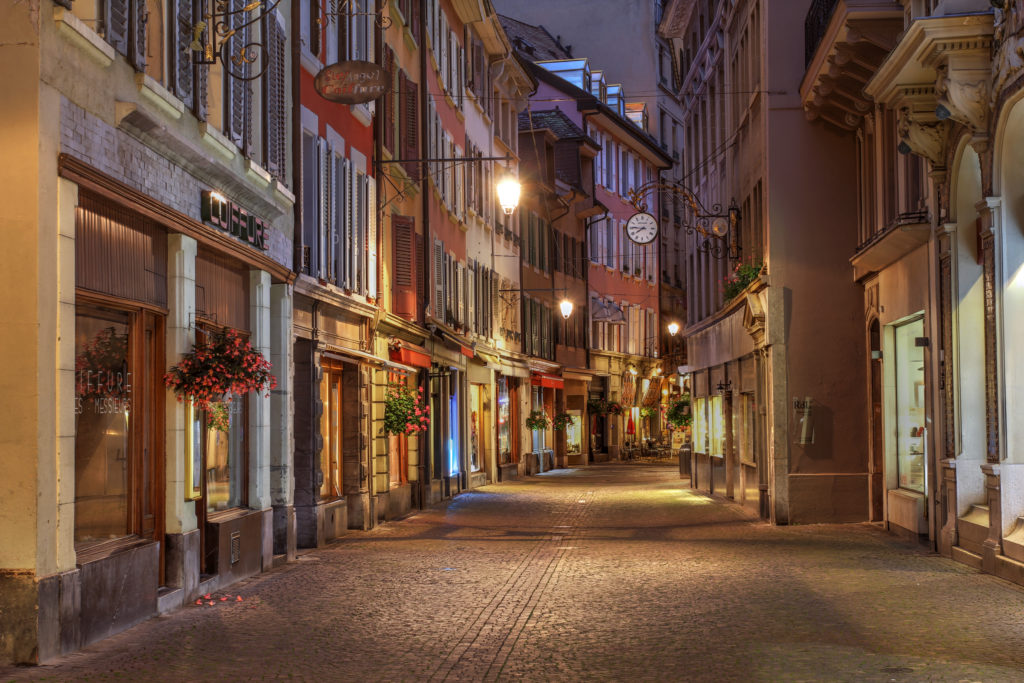Vaud: hidden gem of the Swiss Riviera


Smaller towns
Nearby Vevey is a quieter town, but with two claims to fame: it is the birthplace of milk chocolate and the place Charlie Chaplin called home. Chaplin’s genius is celebrated here in his former residence set in a 10-acre park in the foothills on the edge of town, where his private and public life are on show. The manoir is filled with the furnishings and personal belongs of Chaplin, his wife Oona and their family. Alongside is a Hollywood-style studio, where visitors can immerse themselves in the world of silent film and enjoy plenty of unseen and raw material among the collection of cinematic work from the Little Tramp and others of the era.
From Vevey, follow the long, flower-bordered lakeside promenade to Montreux, a classic resort town, famed for its annual jazz festival and its exceptional warm microclimate. Passing modern sculptures, Mediterranean trees and plants and Belle Époque buildings, you reach the landmark of the Château de Chillon, the most visited historical building in Switzerland. Immortalised by Lord Byron, this Gothic medieval castle seems to float on the serene surface of Lac Léman, disturbed only by the beautiful Belle Époque steamboats – an elegant fleet of side-wheel paddleboats built in the earlier part of the 19th century, which offer slow travel at its finest. Visitors can spend an afternoon surrounded by polished wood, brass and by-gone glamour, enjoying a five course meal and watching the beauty of Vaud’s coastline slip past sailing from one side of the lake to the other.

In contrast, further along the quay, is a striking modern bronze statue of Freddie Mercury, a long time resident. Rock fans flock to the resort to visit Queen: The Studio Experience, at the Montreux Mountain Studios, where the band created large portions of their most acclaimed albums. There is a great selection of Queen memorabilia, set around the exhibition’s centerpiece, the original sound studio, where lead singer Mercury recorded his last songs.
One of the prettiest parts of the Swiss Riviera is the route from Montreux to Lausanne, where the lakeshore is designated to a UNESCO World Heritage site for one special reason, its vineyard. Known as Lavaux, and dating back to the 11th century, every possible square inch supports cascading walled terraces of 10,000 vines, covering nearly 2,000 acres. Local Vaudois say that there are three suns in Lavaux: the one shining in the sky, the one reflected in the lake and, during the evening and night, the warmth coming from the heat accumulated by the miles and miles of high stone walls during hot summer days.
From historic to modern and festivals to natural beauty, there a so many reasons to visit Vaud and the Swiss Riviera, so close to Geneva, and yet a world away.






